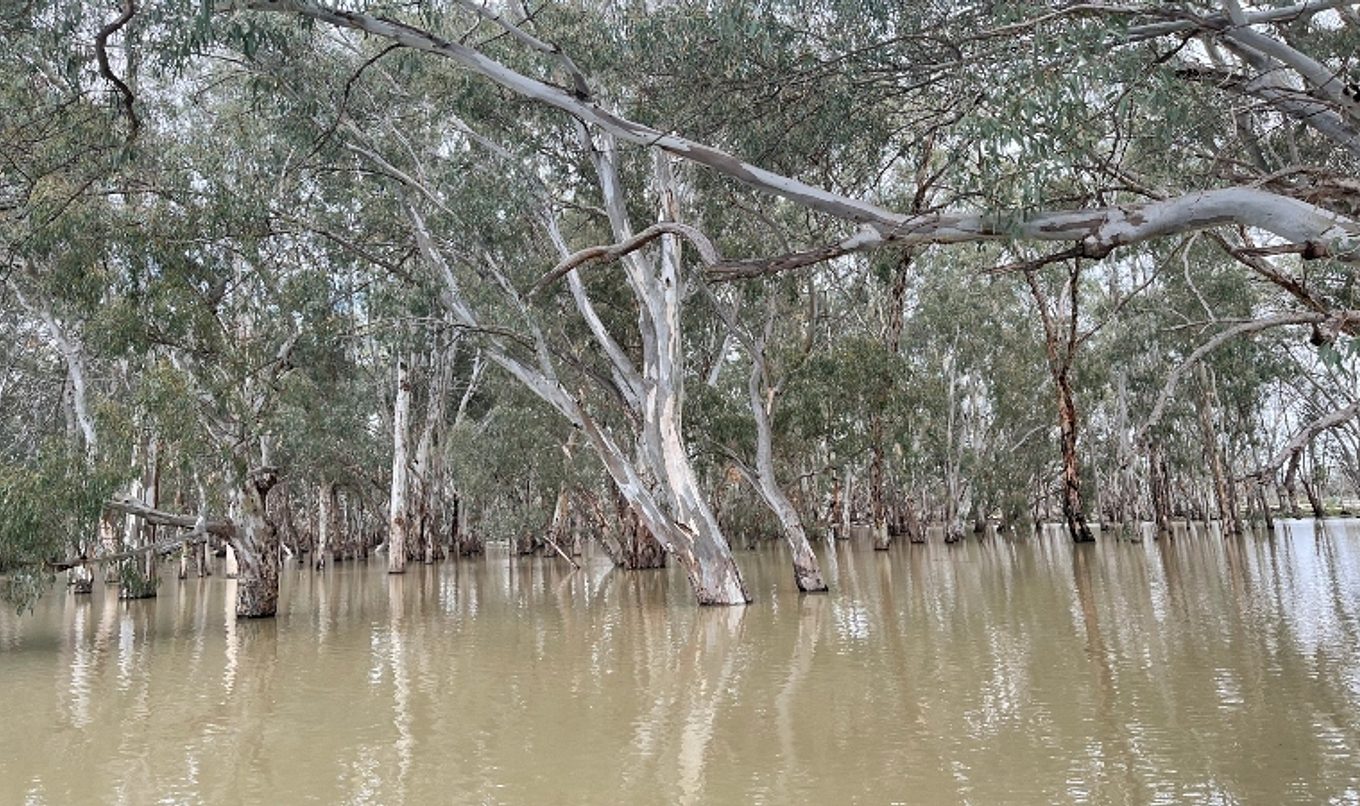Native flora the big winner from increased River Murray flows
River Murray flows into South Australia are currently exceeding 50,000 megalitres per day for the first time since December 2016

The additional water is expected to generate widespread improvements in the condition of native vegetation in temporary wetlands and on the floodplains which have been inundated by the high flows.
Manager Environmental Water with the Department for Environment and Water Tony Herbert explained that approximately 3900 hectares of River red gums are inundated in total when flows to South Australia reach 50,000 megalitres per day.
“This is approx. 1,800 hectares more than last year when river levels reached 35,000 megalitres a day so these River red gums are being inundated for the first time since 2016,” Tony said.
”The River red gums typically need water every one to four years on average to maintain condition so it’s important for the local ecosystem to have water reaching the trees.
“Following inundation, River red gums significantly increase their rate of growth and there’s an increase in leaf, flower and seed production.
“This is benefitting the whole ecosystem as native fauna rely on the resources that plants provide and the prey they support.
“Tree hollows are a critical habitat requirement for many species including the threatened Regent Parrot. Hollows are produced in large, old River red gums and black box trees and depend on floods to support tree recruitment and growth to reach an age where tree hollows form.”
Tony explained that the growth of trees, shrubs and other plants provides a source of carbon and nutrients for floodplain fauna and microorganisms and also for aquatic fauna which access the floodplain during floods.
“As flows recede, inundated areas will drain back to the river channel bringing an increase in resources like carbon, nutrients, zooplankton and phytoplankton,” Tony said
“This increase in organic material provides energy for the aquatic food web.
“Widespread understorey plant growth will occur as water levels recede from temporary wetlands and floodplain areas inundated by the high flow.”
Tony said 500 hectares of black box trees (300 more than last year) and 1500 hectares lignum (over 1000 more than last year) have also been inundated thanks to the additional water.
“Water is reaching many temporary wetlands including Martins Bend, Wigley Reach and Hogwash Bend- areas that have only received water in the last six years via pumping,” Tony said.
Tony said that the high flows have also been enhanced by delivery of water for the environment from multiple sources.
Floodplain inundation and environmental outcomes are being further supported through the operation of environmental regulators on Chowilla and Pike Anabranches.

